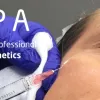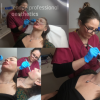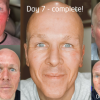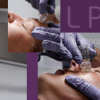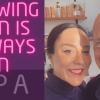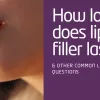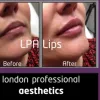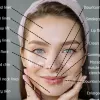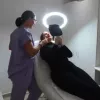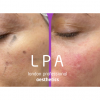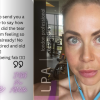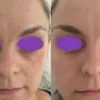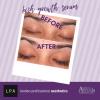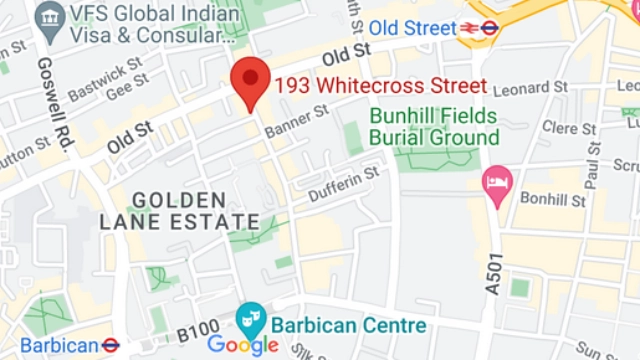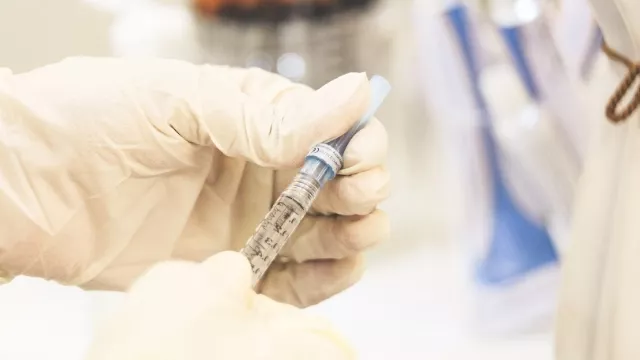
The Truth about Botox®!
Posted on
Botox® is not a poison!
Botox® is the brand name for Botulinum Toxin Type A. This is a protein made in the laboratory from the toxin of a bacterium called Clostridium Botulinum. The toxin is a potent poison. The protein is not. During the manufacturing process, the toxin is diluted, processed and purified. The resulting protein is absorbed completely by the muscles into which it is injected. This is comparable to the production of vaccines. People commonly think that having a vaccine involves having small doses of the disease itself. The truth us that it is usually a protein derived from the disease. You might be surprised to learn that Botulinum Toxin is actually one of the safest medications around. The US Food and Drug Administration (FDA) is responsible for protecting the public health by assuring the safety, efficacy and security of human & veterinary drugs, biological products, medical devices, foods, cosmetics and products that emit radiation. It is one of the strictest agencies in the world, so when you are considering aesthetic treatments the FDA approval means that you can be sure of a treatment that is not only safe but also effective.
Having been in use since the 1980s, Botulinum Toxin has been tested in research trials spanning over one hundred years. Initially introduced strictly for medical use, it was first used to treat excessive eye blinking. Its aesthetic use was established in the first instance accidentally by the world famous Carruthers. Mr Carruthers (Ophthalmologist) was treating his patients for blinking disorders and notice that they began to comment on the improvement in the wrinkles. He reported this fact to Mrs Carruthers whose area of specialty was dermatology. Together they endeavoured on clinical trials that resulted in the use of botulinum toxin as a treatment for wrinkles.
Botulinum Toxin is also used for many conditions and different parts of the body, and as with other medications, new uses are being discovered all the time. You will find that the approved doses of Botulinum Toxin for medical use are significantly greater than the approved dose for cosmetic procedures. It’s important to remember that botulinum toxin is a prescription only medication and is therefore subject to the same scrutiny as other medications.
Since its approval for cosmetic use - millions of procedures have been performed worldwide. When carried out by appropriate professionals, no serious, long term or permanent side effects have ever been reported. That is fantastic statistic!
LPA is an award-winning nurse-led clinic. Our philosophy is to help you age in a way that you feel confident and comfortable in yourself. We’re on a mission to win your trust from the off, by making your visit relaxed and easy and ultimately sending you on your way with a natural revitalised and more attractive version of you, so that you’re ready to conquer your world!
We are based in EC1 in the bustle of the city. We are registered with Save Face, the UK aesthetics regulatory body.
As with any treatment, side effects are possible but rare and in no way serious or permanent. These are mostly associated with the introduction of a needle into the skin rather than the botox itself. In other words, these reactions can occur when injecting any medicine. The following unwanted effects may occur but if they do are minor and temporary.
1. Slight redness - it is sometimes possible to see where the injections have been placed straight after the treatment. This settles very quickly and usually no more than a few hours maximum.
2. Bruising - there will be penetration of the needle so smaller blood vessels may be injured hence the possibility of a very small bruise (1 mm width usually) in the area treated. To minimise the risk of bruising, avoid taking aspirin or ibuprofen for a few days before and after the procedure. If you do notice bruising, it will resolve naturally within a few days and can be easily concealed with make up.
3. Swelling - some very small lumps may occur as a result of the injection but these usually subside within hours of treatment and are not experienced by most patients.
4. Some patients experience a headache following treatment - again this is a result of having been injected, is merely temporary and it is safe to take recommended pain relief.
5. "Ptosis" or drooping of the eyelid is the least common complication (less than 1%); the drooping is so subtle that the patient only notices it when applying eye make up. This generally starts to resolves itself within after 5-7 days.





